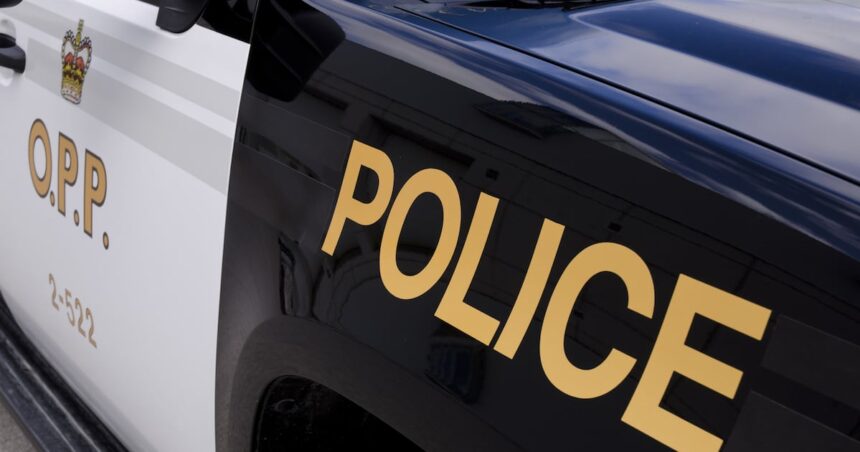The grey clouds that hung over Highway 7 near Kawartha Lakes yesterday afternoon matched the somber mood as emergency crews responded to what witnesses described as a “horrific” collision that claimed the life of a motorcyclist.
Provincial police confirmed that the crash, which occurred just after 2:30 p.m. near the intersection of Highway 7 and Boundary Road, involved three vehicles – a motorcycle, a pickup truck, and a sedan. The motorcyclist, a 42-year-old man from Peterborough, was pronounced dead at the scene.
“You could hear the sirens for miles,” said Sarah McIntosh, who was driving on a nearby concession road when emergency vehicles began racing past. “When you live in smaller communities like this, you immediately worry it might be someone you know.”
The OPP’s preliminary investigation suggests the eastbound motorcycle collided with a westbound pickup truck that was attempting to make a left turn. The impact caused secondary contact with a sedan waiting at the intersection. The drivers of the other vehicles sustained minor injuries and were treated at the scene.
This marks the third motorcycle fatality in the region this summer, a statistic that has road safety advocates concerned. According to Transport Canada data, motorcycle collisions typically increase by 30% during peak summer months across Ontario.
“These rural highway intersections can be particularly dangerous for motorcyclists,” explained Constable Derrick Williams of the OPP’s Central Region Traffic Unit. “Visibility issues combined with higher speeds create a dangerous mix, especially during tourist season when traffic patterns change.”
Local resident Tim Porter, who arrived shortly after the collision, told me the intersection has long been a concern for area residents. “We’ve been asking for turning lanes or better signage for years,” Porter said. “The highway gets busy with cottagers and tourists, and not everyone is familiar with these crossroads.”
The Transportation Safety Board of Canada reported that motorcycle fatalities increased 11% nationwide last year, with intersection collisions representing nearly half of those incidents. Rural highways with speed limits above 80 km/h accounted for a disproportionate number of severe crashes.
Highway 7, which serves as a major east-west corridor connecting communities across central Ontario, has seen increased traffic volume in recent years. The stretch between Lindsay and Peterborough has been flagged in municipal safety reports as needing infrastructure improvements.
“These aren’t just statistics,” said Jennifer Cooper, spokesperson for the Ontario Road Safety Coalition. “Each number represents someone who left home expecting to return to their family. As a society, we need to decide if we’re doing enough to protect vulnerable road users.”
The Ministry of Transportation confirmed that the intersection where yesterday’s collision occurred is scheduled for safety assessment later this year, though specific improvements haven’t been announced. Local municipal councils have previously petitioned for accelerated review of several Highway 7 intersections.
Weather conditions at the time of the crash were clear with good visibility, according to Environment Canada data. Police have not indicated whether speed or impairment were factors in the collision.
“We’re asking any witnesses who haven’t yet spoken with investigators to come forward,” said OPP Sergeant Carlos Mendes. “Dash cam footage from vehicles in the area around 2:30 p.m. would be particularly helpful.”
The deceased motorcyclist’s name is being withheld pending notification of family members. Community members have already begun placing flowers at the intersection – a somber reminder of how quickly life can change on our roadways.
For residents of the Kawartha Lakes region, this tragedy adds to ongoing concerns about road safety during the busy summer months when the area’s population swells with seasonal visitors. Local driving instructor Melissa Karns told me she specifically teaches her students about the unique challenges of rural highway driving.
“Many new drivers don’t understand how different these intersections are from city driving,” Karns explained. “Depth perception, speed judgment, and anticipating others’ movements become even more critical skills out here.”
Highway 7 remained closed for approximately six hours while the OPP Technical Traffic Collision Investigators completed their on-scene work. The investigation continues, with police expecting to provide additional details in the coming days.
As communities across Ontario struggle with similar traffic safety challenges, this latest tragedy serves as a painful reminder of the real human cost behind collision statistics. For one family, the sunshine of a summer afternoon has given way to unimaginable darkness.






